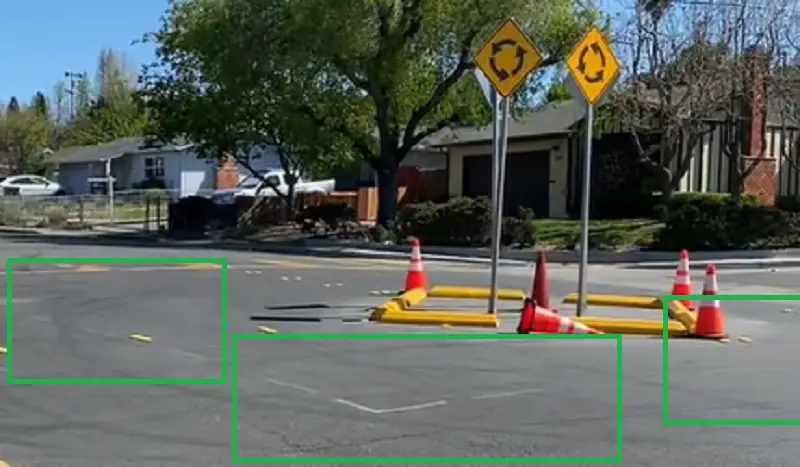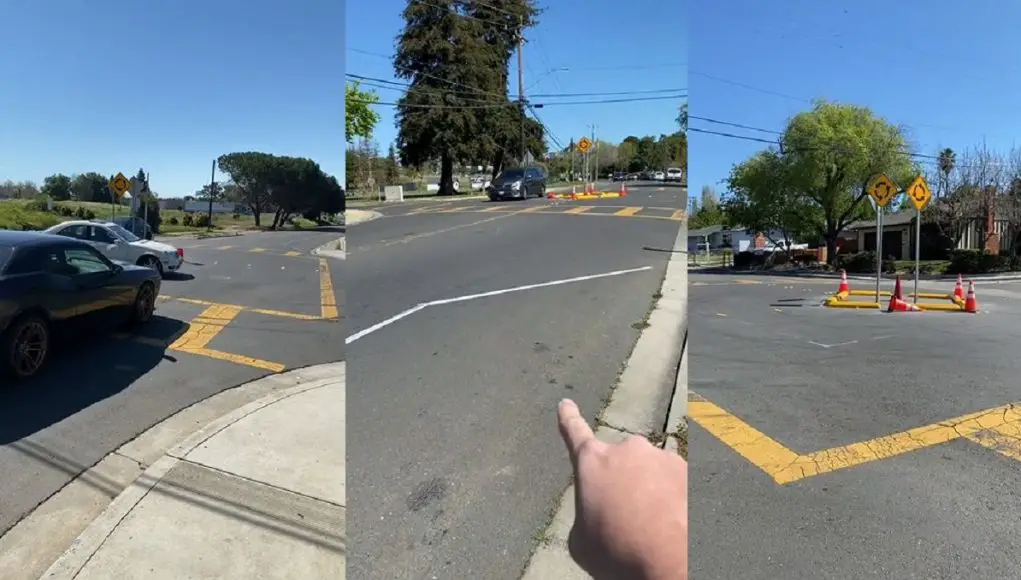If you want a masterclass on how not to construct a roundabout, this is it.
The City of Vallejo, California is going viral all over social media for all the wrong reasons. A TikTok video by a Vallejo Public Works employee, who goes by @TrainedEyeGuy, shows the absolute cluster**** that happened when someone put up a poorly designed, and hopefully temporary, roundabout.
Check out his video below. His video is also on Instagram, linked here.
@trainedeyeguy Roundabout? Sort of. #trainedeye #vallejo #sideshow #safer #roundabout #therewasanattempt #OscarsAtHome #youdonthavetoagreewithmebutimright #publicworks ♬ original sound – Paragon of public works
According to @TrainedEyeGuy word got out about this mess of a roundabout thanks to the Vallejo Happenings Facebook Group.
Presumably, the city of Vallejo is in the preliminary construction phases of a permanent roundabout at this particularly busy four-way intersection.
Roundabouts, more common in Europe than in the United States, are used as four-way stop replacements. Although there’s always a small amount of pushback against their construction and implementation, their benefits, mainly improved traffic flow and better pedestrian safety, trump the steep learning curve American drivers eventually adapt to.
Keen eyes (or trained eyes) will notice spray paint markings around the temporary roundabout marking its permanent layout.

Unfortunately, as many comments point out, this temporary roundabout is doing more harm than good.
“That’s not a roundabout,’ says @vspinyyc. “It’s a roundsuggestion.”
“This has to be a joke,” @JoeCool1215 comments. “Six parking blocks, four cones, and three signs do not make an intersection a (temporary) roundabout.”
Proper roundabouts typically have ample room for cars to slow before entering, facilitated by yield signs.
The stops signs, still up, make this temporary roundabout even more confusing.
On top of that, as @TrainedEyeGuy points out, the center island is not large enough for cars to actually drive around and the crosswalks eventually get in the way of the roundabout’s operation.
“This is one of the big problems, @TrainedEyeGuy comments. “You can’t realistically make these turns without hitting one of these crosswalks because they were not adjusted for the roundabouts.”
Even if someone had a large enough brain to think this would actually work out, this all could’ve been avoided by testing it out for yourself.
Or, as @TrainedEyeGuy is demonstrating, simply observing.
Clearly, someone who works for Vallejo or whoever is in charge of this project simply doesn’t care, since it’s just temporary.
In the meantime, Vallejo residents will have to navigate this confusing intersection before all four ways are blocked off for the real roundabout’s construction.
Knowing how long it takes to get anything done in city government, that can be a long time.




Testing a concept before spending scarce public funds is a time-honored way for jurisdictions to see effects and test ideas. This looks like a valid test.
Many jurisdictions do not change traffic control when neighborhood traffic circles are installed, i.e., leave the stop control as it is.
Mini-roundabouts cost about $5,000 without changing the corners for correct crosswalk placement, about $10,000 per corner. Mini-roundabouts are not the same as neighborhood traffic circles.